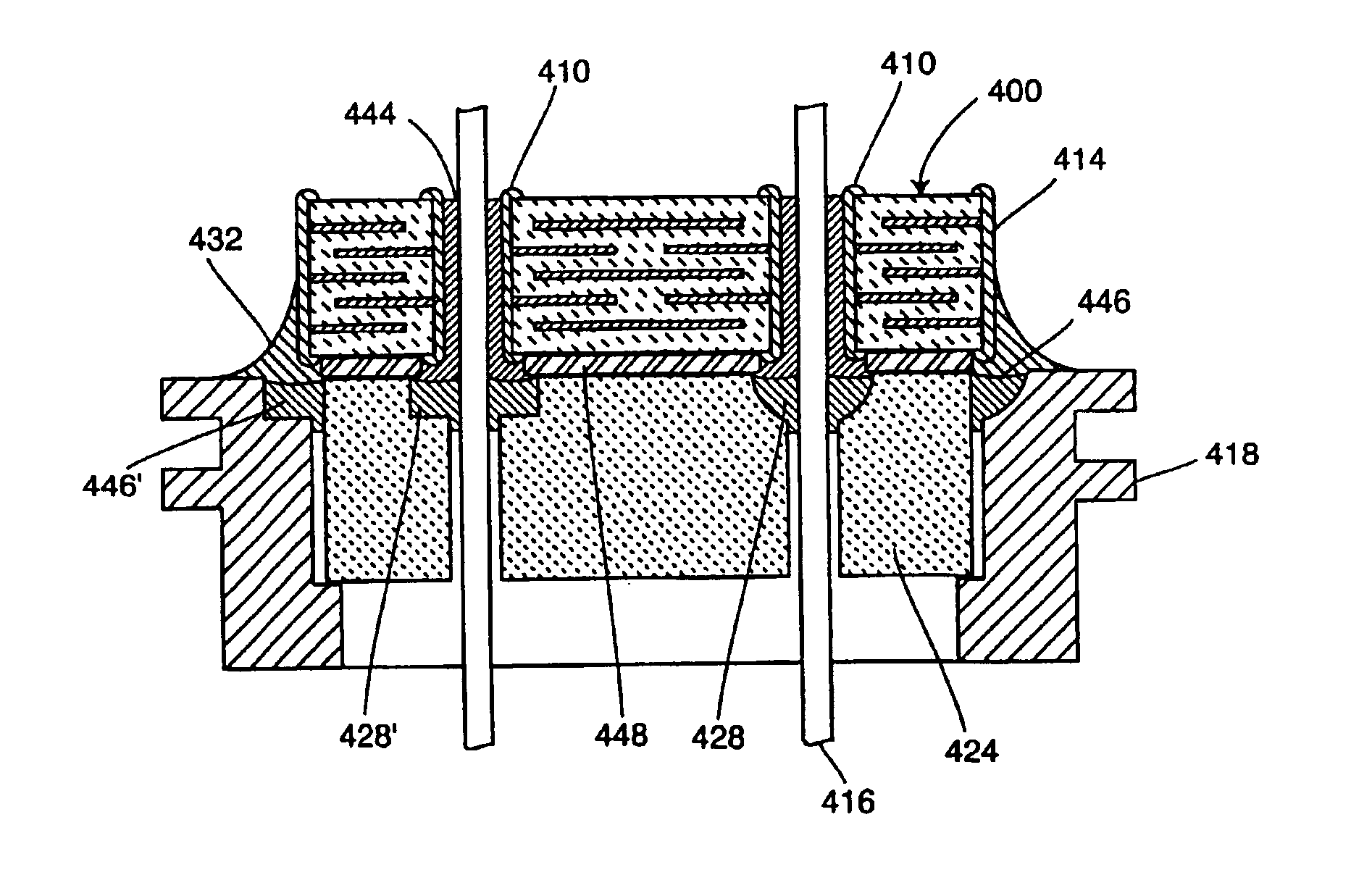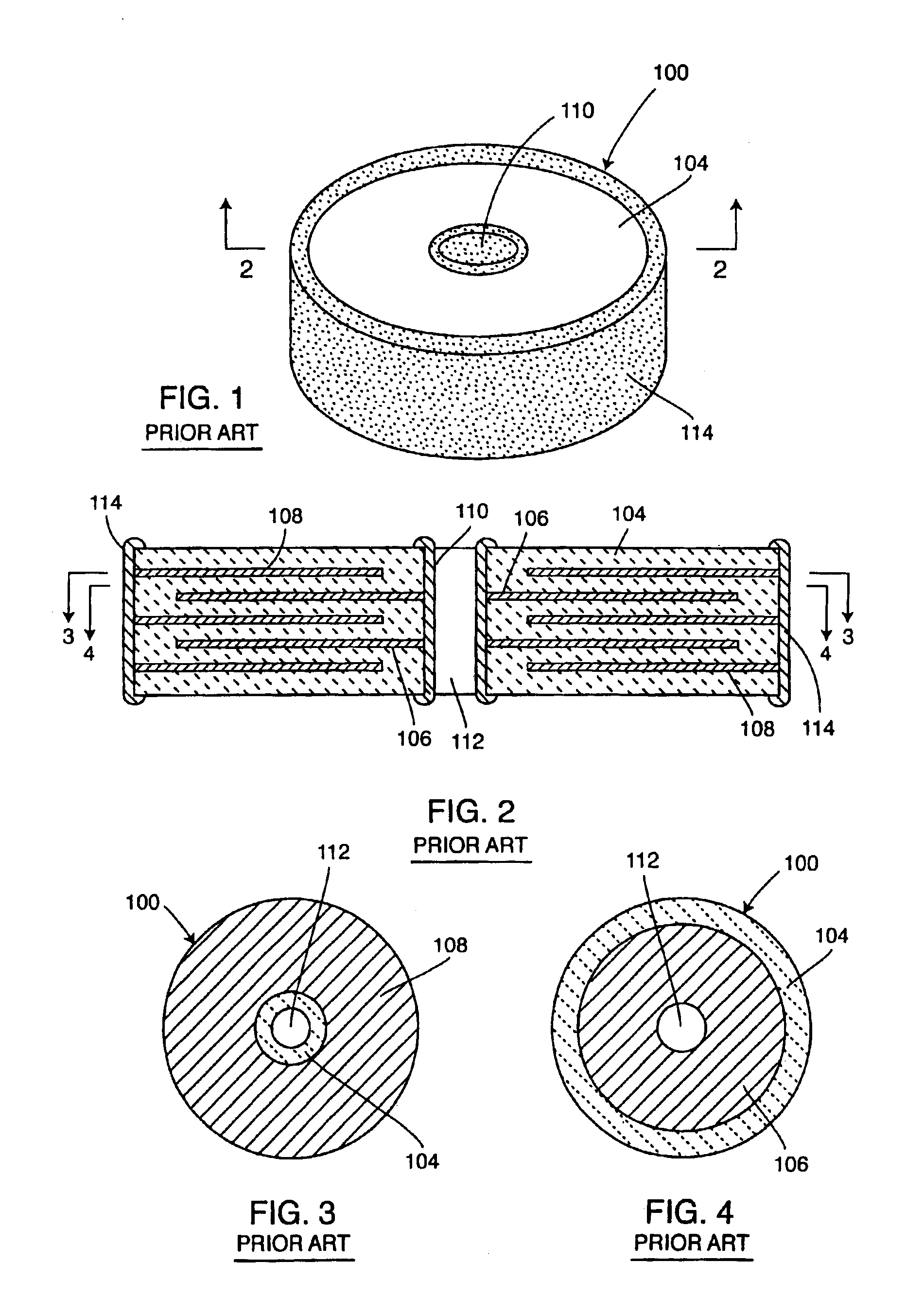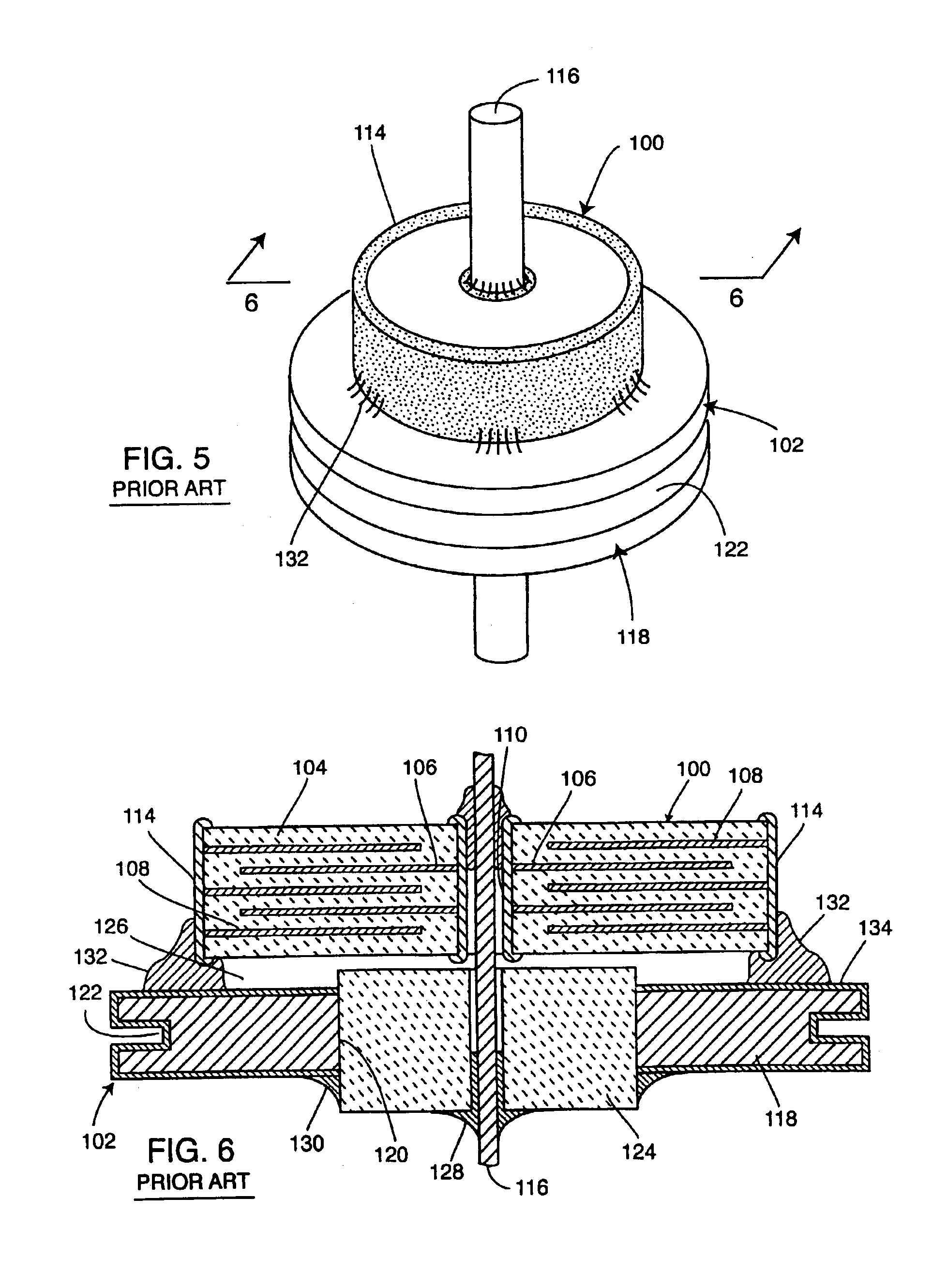EMI feedthrough filter terminal assembly utilizing hermetic seal for electrical attachment between lead wires and capacitor
a technology of capacitors and terminal assemblies, applied in the direction of feed-through capacitors, fixed capacitor details, therapy, etc., can solve the problems of affecting the desired cardiac pacing or defibrillation function, all capacitors have varying degrees of undesirable resistance and inductance, and achieve reliable electrical attachments
- Summary
- Abstract
- Description
- Claims
- Application Information
AI Technical Summary
Benefits of technology
Problems solved by technology
Method used
Image
Examples
Embodiment Construction
[0090]Titanium housings, casings and ferrules for hermetic seals are commonly used in the medical implant industry. Pacemakers, implantable defibrillators, cochlear implants and the like, all have ferrules or housings made of titanium or titanium-ceramic composite structures. All of the aforementioned devices are also subject to electromagnetic interference (EMI) from emitters that are commonly found in the patient environment. These include cell phones, microwave ovens and the like. There are a number of prior art patents which describe EMI feedthrough filters which make the implantable devices immune to the effects of EMI.
[0091]The inventors have noted that the presence of oxides of titanium can preclude the proper performance of monolithic ceramic EMI feedthrough filters. The titanium oxides that form during manufacturing processes or handling form a resistive layer. High frequency impedance analyzer plots of resistance vs frequency illustrate this effect is particularly prominen...
PUM
 Login to View More
Login to View More Abstract
Description
Claims
Application Information
 Login to View More
Login to View More - R&D
- Intellectual Property
- Life Sciences
- Materials
- Tech Scout
- Unparalleled Data Quality
- Higher Quality Content
- 60% Fewer Hallucinations
Browse by: Latest US Patents, China's latest patents, Technical Efficacy Thesaurus, Application Domain, Technology Topic, Popular Technical Reports.
© 2025 PatSnap. All rights reserved.Legal|Privacy policy|Modern Slavery Act Transparency Statement|Sitemap|About US| Contact US: help@patsnap.com



